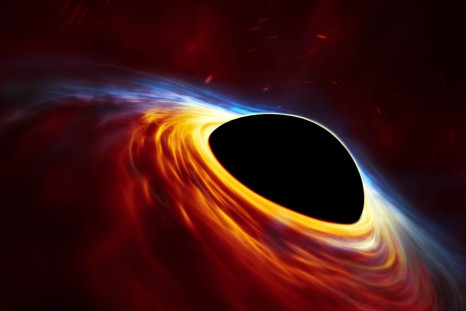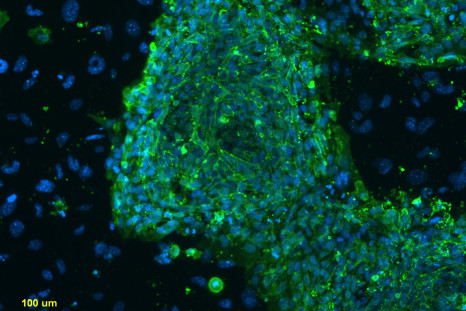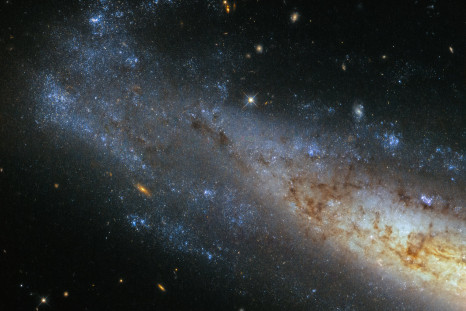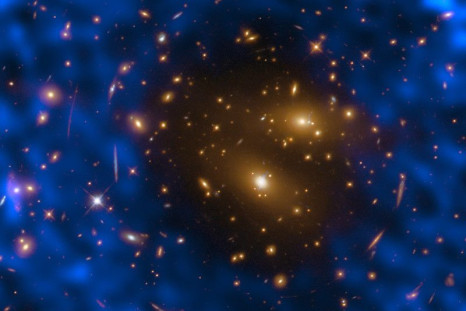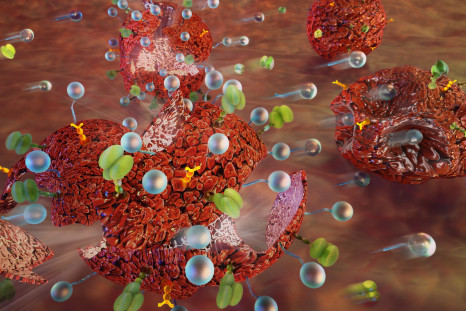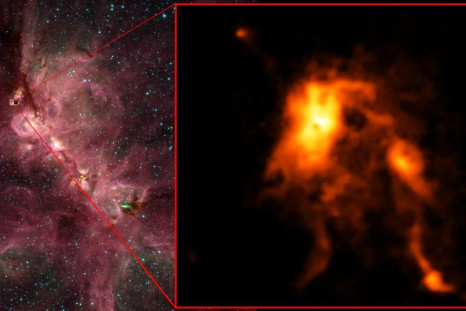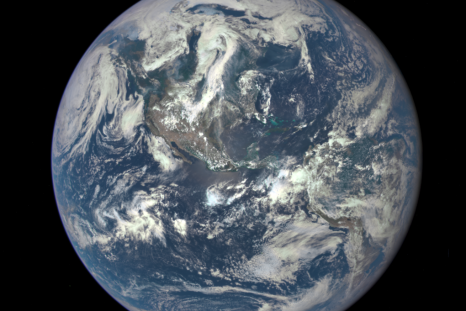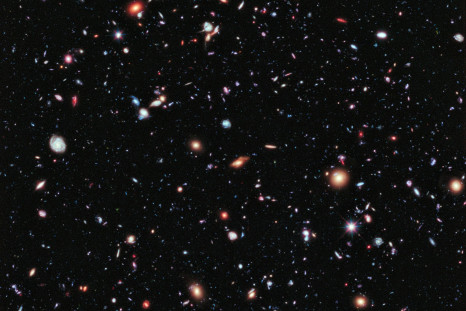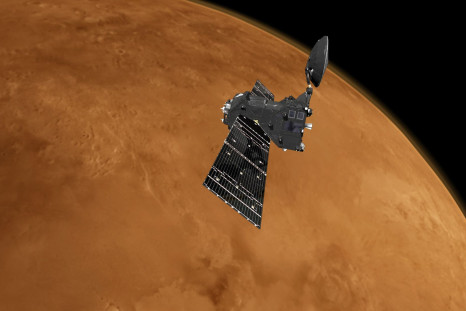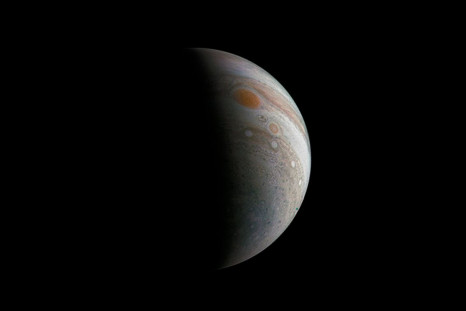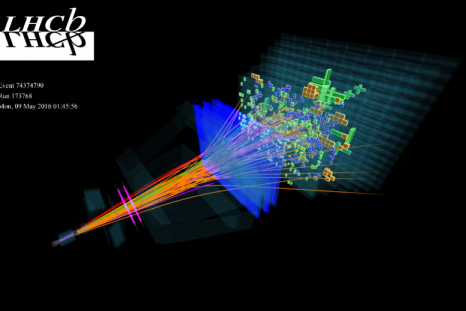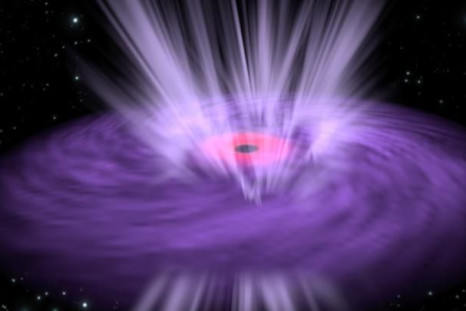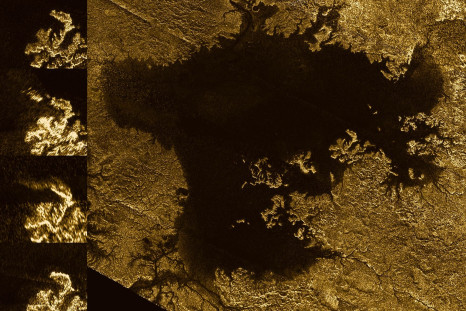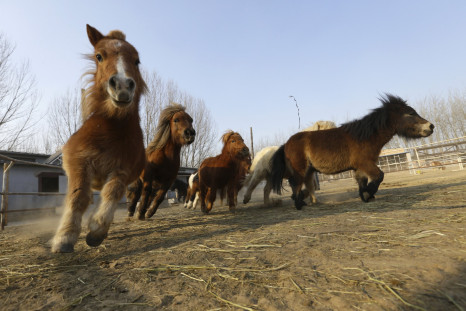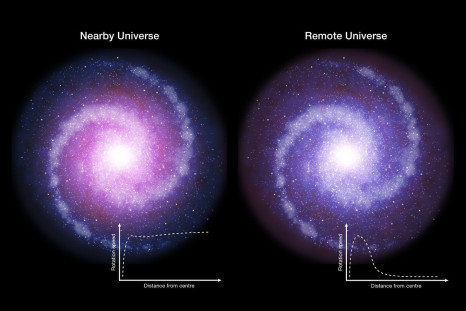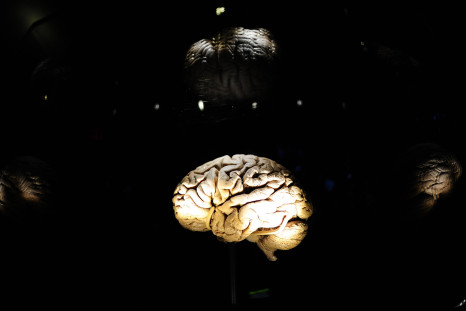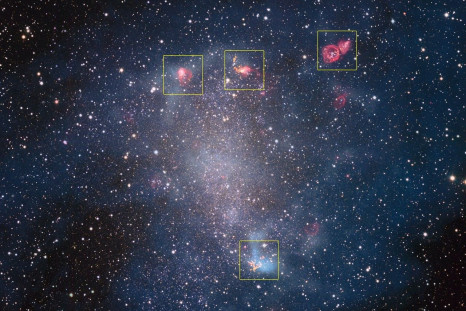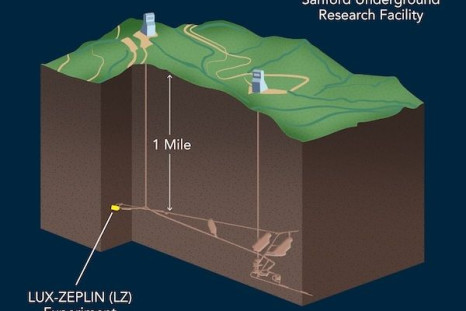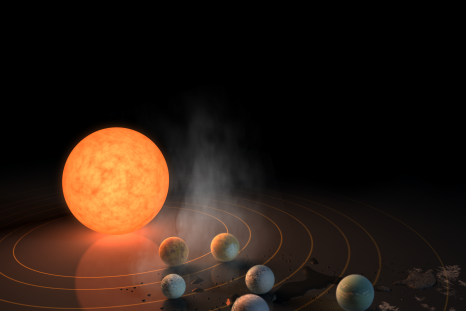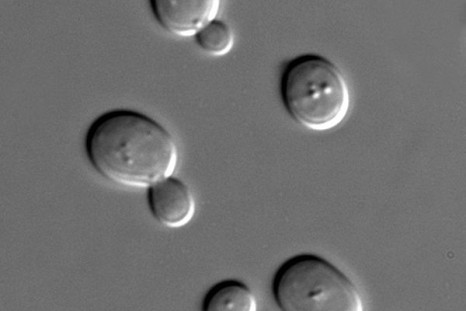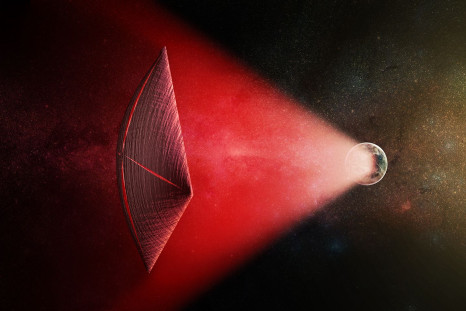How Did Supermassive Black Holes Form In Early Universe? Computer Simulation Provides Answers
A new computer model has finally solved a longstanding cosmic quandary — how did supermassive black holes form in the first billion years of the universe?
Stem Cells Grown In Space Could Be Used To Treat Diseases Back On Earth
Scientists on board the International Space Station are attempting to grow stem cells in microgravity in an effort to boost their therapeutic viability.
Mars' Arsia Mons Last Erupted About 50 Million Years Ago
Volcanic activity in Arsia Mons — the southernmost member of the Tharsis Montes group — most likely peaked roughly 150 million years ago.
Hubble Snaps New Image Of Spiral Galaxy NGC 1448
The image, captured using the telescope's Wide Field Camera 3, shows a section of the spiral galaxy located about 50 million light-years from Earth.
Mars May Once Have Had Rings, And It Will Again ... Eventually
A new model suggests that Mars' moons — Phobos and Deimos — may be the product of rings of debris coalescing and breaking apart many times over the past 4.3 billion years.
What Does The Cerebellum Do? Probably Much More Than We Think
A team of researchers has discovered that the "little brain" may be playing a key role in anticipating and responding to rewards — activities that are key drivers of behavior.
Astronomers Spot A Dark Radio 'Hole' Around A Distant Galaxy Cluster
This is the first time the Atacama Large Millimeter/submillimeter Array has been used to image and measure what’s known as the Sunyaev-Zel’dovich effect.
Cure For Cancer: Coating Cells With Nanoparticles May Boost Drug Efficiency
In a new study, a team of MIT researchers describe a technique to make tumor cells more susceptible to certain kinds of anti-cancer drugs.
Outburst In Cat's Paw Nebula Sheds Light On Star Formation
Astronomers believe the outburst was triggered by a protostar in the nebula undergoing a period of intense growth spurt.
Geologists Discover Remnants Of Earth's Original Crust
The discovery of the 4.2 billion-year-old crust, found in samples harvested from the Canadian Shield, could help geologists better understand Earth's formative years.
CERN Update: New Experiment Aims To Find Signs Of Matter-Antimatter Asymmetry
The experiment — Gravitational Behaviour of Antihydrogen at Rest — is designed to study how gravity affects antimatter particles.
ExoMars Update: ESA's Trace Gas Orbiter Completes Science Calibration Tests
Data gathered during these tests — carried out earlier this month — would add to that collected during the two dedicated science orbits conducted late last year.
JUICE, ESA's Jupiter Mission, Moves Into Construction Phase
The mission involves putting a spacecraft — the Jupiter Icy Moons Explorer — in orbit around the gas giant and its massive moon Ganymede.
What Are Three-Parent Babies? UK Regulator Grants Licence For IVF Technique
The licence, granted to a clinic at Newcastle University, would allow doctors to carry out pronuclear transfer to reduce the risk of mitochondrial diseases.
CERN LHC Update: LHCb Experiment Discovers New System Of Five Particles
The particles are all excited states of Omega-c-zero, which is a baryon containing two strange and one charm quark.
NASA Twins Study: Scientists Begin Integrating Data Ahead Of Publication Of Results
The earliest studies based on the treasure trove of data gathered as part of the unique study may be published either later this year, or sometime in 2018.
Astronomers Spy A Distant Supermassive Black Hole Choking On Stardust
A team of astronomers has spotted a supermassive black hole located in a galaxy 300 million light-years from Earth "choking" on stardust.
Saturn's Moon Titan May Have Bubbly Lakes Fizzing With Nitrogen
A series of NASA experiments has indicated that on Saturn's largest moon, hydrocarbon lakes may occasionally “breathe” nitrogen.
Global Warming May Cause Some Mammals To Become Smaller
A team of researchers has found a direct correlation between the rise in global temperatures and the size of some mammals — when temperatures rise, some mammals shrink.
Earth's Inner Radiation Belt May Be Much Weaker Than Previously Thought
The discovery, made using instruments on board NASA's Van Allen Probes, could help scientists create lighter and cheaper spacecraft designed to withstand the low-intensity radiation in the inner belt.
Dark Matter Made Up A Tiny Fraction Of Galaxies In Early Universe
Observations of star-forming galaxies in the early (and distant) universe have revealed that unlike their modern-day counterparts, these galaxies were completely dominated by normal matter.
How Do Memories Form? Our Brains May Be More Powerful Than Previously Thought
A new study that examined neuronal activity in lab rats has revealed that parts of nerve cells are more active than scientists hitherto assumed them to be.
NGC 6822: Dwarf Galaxy's Star-Forming Regions Revealed In New ESO Images
The images of the dwarf galaxy NGC 6822 reveal that even in low-mass galaxies, the process of star birth is remarkably similar to that in more massive galaxies like the Milky Way.
What Is Dark Matter? LUX-ZEPLIN, Sensitive WIMP Detector, Enters Final Stages Of Construction
The LUX-ZEPLIN experiment, housed in a one-mile-deep abandoned gold mine in South Dakota, is scheduled to become operational in 2020.
NASA's Kepler Observes TRAPPIST-1: First Images Of Red Dwarf Show Dips In Star's Light Output
The images, captured using the Kepler Space Telescope, show dips in the brightness of the red dwarf star caused by the system's transiting planets.
Can 'Superballistic' Electron Flow Lead To Creation Of Perfect Conductors?
A team of researchers has shown that it is possible, at least theoretically, for electrons to flow through a narrow opening in a piece of metal much faster than previously thought.
Synthetic Life: A Fully Artificial Yeast Genome Is Now A Step Closer To Reality
In seven papers published Thursday in the journal Science, an international team of researchers describe the creation of five additional “designer” chromosomes of baker’s yeast.
What Is Time? Quantum Mechanics, General Relativity Place Fundamental Limits On Our Ability To Measure Time
In a new study, researchers combine the principles of quantum mechanics and general relativity to place fundamental limits on our ability to measure time.
Milky Way's Supermassive Black Hole Ate Its Last Big Meal 6 Million Years Ago
Analysis of gigantic gas bubbles burped out by Sagittarius A* — the black hole at the center of our galaxy — has revealed when it ate its last big meal.
Are Aliens Real? Probably, And They May Be Responsible For Fast Radio Bursts
In order to explain the origin of these mysterious bursts of radio emissions, two researchers from the Harvard-Smithsonian Center for Astrophysics have put forward a controversial idea — aliens are causing them.



